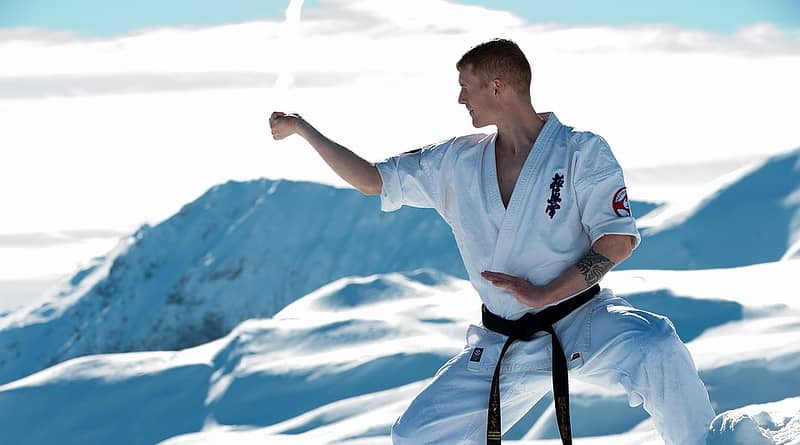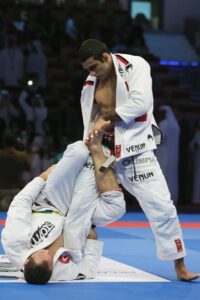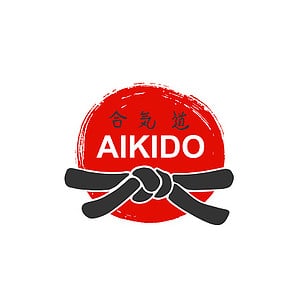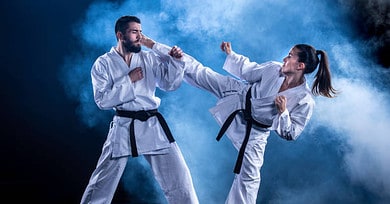How to Choose The Right Martial Art Style for You?
How To Choose The Right Martial Art Style For You?
The practice of martial arts is an ancient tradition that has been passed down for generations. It is a form of physical training and discipline, as well as an art form. Choosing the right martial art style can be difficult, but with careful research and consideration you can find one that fits your needs perfectly. This article will serve as a guide to help you make the best decision when choosing a particular martial arts style.
In order to select the perfect martial arts style for yourself, it is important to consider factors such as fitness level, desired skill sets, personal goals, and other preferences. Different styles have different strengths and weaknesses in terms of teaching methodology, techniques taught, and type of activity involved. Therefore, it is essential to thoroughly evaluate each option before making a choice. Additionally, researching various schools or dojos offering instruction in certain martial arts styles should also be taken into account prior to settling on any specific one.
Finally, being mindful of safety concerns associated with participating in martial arts is also highly recommended; finding an instructor who emphasizes proper technique and good sportsmanship over competition should always be priority when selecting a school or dojo. The next sections of this article will provide more information about how to properly choose the right martial art style for you so that you may begin your journey towards self-improvement through learning the art of combat safely and effectively.
Different Types Of Martial Arts
Martial arts encompass a wide array of combat practices, ranging from ancient techniques to modern disciplines. Each style offers its own distinct set of physical and mental benefits. It is important for individuals seeking to learn martial arts to consider their fitness level, as well as personal goals and preferences when selecting the best type of discipline for them.
The most popular forms of martial art include Karate, Taekwondo, Judo, Kung Fu, Aikido and Jiu-Jitsu. Karate and Taekwondo emphasize striking with punches or kicks while Judo focuses on throwing opponents off balance using grappling movements such as throws, joint locks and submission holds. Kung Fu combines kicking and punching with powerful blocks and stances that help protect practitioners in self-defense situations. Aikido emphasizes blending with an attacker’s energy rather than directly confronting it; instead of simply blocking strikes or countering attacks, Aikido students redirect force away from themselves by controlling the opponent’s body movement. Jiu-Jitsu teaches practitioners how to stay relaxed in order to control an adversary without relying solely on strength or speed.
No matter which style they choose, aspiring martial artists should take time to research different types of martial arts before making a commitment so that they can select one that matches their individual needs. Moving forward into the next section about ‘benefits of martial arts’ will further enable those interested in this practice to make an informed decision regarding which particular style is right for them.
Benefits Of Martial Arts
Practicing martial arts offers a variety of advantages. Firstly, it is an excellent way to maintain physical fitness and overall health. The rigorous training involved in the practice of any style focuses on aerobic activity, strength-building exercises, flexibility, balance and coordination. Additionally, many practitioners report that martial arts can be beneficial for mental clarity as well due to its meditative nature. Martial arts also provides individuals with self-defense skills in order to protect themselves if needed.
The social aspect of training should not be overlooked either; martial arts classes are often filled with like-minded people who help each other learn, grow and develop their skills together under the guidance of an instructor. It is a great way to build camaraderie and even lifelong friendships.
Finally, practicing martial arts helps promote discipline, respect and perseverance through overcoming challenges during practice sessions which can have positive influences across all areas of life. With these benefits in mind, one must consider his/her commitment level when choosing the right style for him or her.
Commitment Level
The commitment level required to learn and master a martial art is often underestimated. Although the rewards of training can be great, they only come with time; something that must not be taken lightly. This is especially true when choosing a style that best suits your goals and abilities – it’s important to ensure you’re willing to put in the effort necessary for success. As the old saying goes, “Rome wasn’t built in a day” – this holds true for learning any martial arts discipline as well.
When selecting an appropriate style of martial art, it pays to consider how much practice and dedication will be needed to reach the desired skill level. For example, some styles may require more physical fitness than others, while some may require more mental focus or attention to detail. It’s also important to remember that many martial arts are based on principles of self-defense; mastering these concepts takes significant time and energy. Knowing what kind of commitment level one can realistically expect from oneself before signing up for classes is essential for successful training and development over time.
Furthermore, most instructors recommend staying consistent with their recommended class schedule instead of skipping lessons due to lack of motivation or exhaustion. In other words, committing yourself fully by attending each class regularly allows one to build upon previous skills gradually and steadily rather than attempting too much at once without proper guidance or instruction. With patience and perseverance comes greater understanding of the techniques being taught which leads ultimately results in better performance outcomes overall.
Physique And Strength
When considering which martial art style is right for you, it is important to consider your physique and strength. Your size and natural body type can influence the types of techniques that are most effective in a given situation. For example, if you have a strong build, then styles such as judo or Brazilian jiu-jitsu may be more suitable than karate or tae kwon do due to their emphasis on grappling. On the other hand, if you have a slender build then striking arts like muay thai or boxing might suit better because they rely less heavily on physical strength.
It is also important to take into account any existing injuries or disabilities when selecting a martial art style. Some forms of training could worsen an injury depending on how much contact there is between practitioners during sparring sessions. Additionally, certain techniques may not be possible based on pre-existing conditions, so being mindful of these restrictions will help ensure that you choose the best option for your individual circumstances.
No matter what kind of martial arts technique you decide to pursue, having realistic expectations about how long it takes to master each skill set is essential for success and enjoyment over time. Knowing what your goals are from the outset will make choosing a style easier and provide motivation for continued practice. With this information in mind, age considerations should also come into play when making decisions about which martial art style fits best with your needs.
Age Considerations
When choosing a martial art style, age is an important factor to consider. Young children may benefit from more traditional styles due to their focus on discipline and respect while teenagers may prefer the more modern combat-oriented styles that involve physical contact. Furthermore, adults should look for styles with low impact movements such as Tai Chi or Aikido that are well suited to older practitioners.
Age can also play a role in the intensity of training. Styles like Karate and Taekwondo have higher demands when it comes to cardio fitness and agility which may be too much for younger students or those who lack stamina. On the contrary, senior citizens or people with disabilities should opt for gentler forms of exercise like yoga or Qi Gong that emphasize breathing techniques over speed and power.
The complexity of certain moves should also be taken into account when considering an appropriate style based on age group. For example, some Kung Fu schools use intricate hand gestures and stances which require decades of practice before mastery, making them better suited for experienced practitioners rather than novice learners. In order to find the most suitable style regardless of age, it is essential to research the different types available and evaluate each one’s main characteristics before committing to any particular program. With this knowledge in mind, individuals will be able to make informed decisions regarding what type of martial arts best fits their needs as they move forward into their journey as a martial artist. Transitioning now into availability of classes and instructors…
Availability Of Classes And Instructors
When deciding which martial art style is right for you, it is important to consider the availability of classes and instructors in your area. A good way to begin this process is by researching local gyms or dojos that offer martial arts instruction. Many times these locations will have several different styles available, allowing you to compare and contrast options. Additionally, they may also offer a variety of class types such as group sessions, private lessons, seminars, etc., giving you more opportunities to choose an option best suited for your skill level and interests.
In addition to considering what type of classes are offered at each location, it is also important to research the quality of instruction. Factors such as instructor experience and certifications should be considered when evaluating potential schools or teachers. It is essential to find someone who can provide safe and effective guidance during training so that students can develop their skills correctly. Furthermore, having access to experienced practitioners allows individuals to gain insight into various techniques from multiple perspectives.
The ability to observe existing classes before enrolling can be beneficial for those unsure about committing themselves long-termly or financially. Doing so provides valuable information regarding instructor knowledgeability and teaching methods that cannot always be obtained through other means such as reviews or ratings on websites like Yelp or Google My Business. The opportunity to watch a few classes can help solidify one’s decision before signing up for any commitments involving time or money investment. Location of Classes/Dojo is another factor worth considering when selecting a martial art style suitable for individual needs and preferences.
Location Of Classes/Dojo
When selecting a martial art style, it is important to find a local class or dojo that offers instruction. It should be convenient for the student in terms of both location and scheduling. Local classes are preferable as they offer more opportunity to interact with instructors and other students on a regular basis.
Instructors should have valid credentials demonstrating their expertise in the chosen style. This may come in the form of rank certification from recognized organizations such as the World Karate Federation or United States Judo Federation. In addition, instructors should possess relevant teaching experience and demonstrate an ability to communicate effectively with students.
A quality dojo will maintain cleanliness, safety equipment, appropriate mats, and provide adequate space for practicing techniques without overcrowding the training area. Quality instruction also includes providing feedback throughout each lesson so that proper technique can be reinforced while mistakes can be corrected quickly before habits become ingrained. Therefore, prospective students should visit several dojos prior to enrolling in order to make sure they feel comfortable within the environment and gain confidence in the instructor’s abilities.
Cost considerations must be taken into account when making an informed decision about which martial arts style is best suited for each individual student’s needs.
Cost Considerations
Choosing the right martial art style can be likened to a journey. Like any good traveler, one should consider all factors before embarking on their chosen path. The cost of training is one such factor that must be taken into account when selecting a martial arts style. Training in most styles can range from inexpensive to extremely expensive depending on the particular school and instructor selected.
The fees associated with traditional martial arts schools vary greatly based on location, the type of instruction offered and other services provided by the school or dojo. It is important to research local schools thoroughly and compare prices between different instructors offering similar programs prior to signing up for classes. Many online resources are available which provide detailed information about various martial arts schools in your area.
For those who cannot afford regular lessons at a physical dojo, there are several virtual options as well, including instructional videos and online courses offered through websites such as YouTube or Udemy. While these alternatives may not offer hands-on teaching from an experienced master, they can still provide valuable insight into many aspects of martial arts practice without breaking the bank.
Regardless of budget constraints, there are plenty of ways for aspiring martial artists to begin their journey without sacrificing quality training along the way. As with any major purchase, it pays to shop around and find out what is best suited for your individual needs – both financially and otherwise – before committing to a specific program or school
Social Aspects Of Training
The decision to start martial arts training is not limited to cost considerations. It’s also important to consider the social aspects of training. Training in a self-defense style or a competition style can have very different implications for your personal interactions and relationships with other students. Here are three key points:
- Self-Defense classes often foster more teamwork between students, since it’s helpful to practice techniques with partners who understand each other’s body language and movements.
- Competition classes tend to be highly individualized; competitors must focus on perfecting their own skills rather than working together as a team.
- In both types of classes, instructors create an environment that encourages respect among peers and promotes camaraderie through physical activity.
Whether you choose self-defense or competitive martial arts will depend largely upon your goals and personality type. Those looking for a supportive community might find that self-defense classes provide just the right atmosphere for them, whereas those seeking personal achievement may prefer competition styles of martial arts practice instead. Ultimately, it boils down to what motivates you most – either way, martial arts can help bring out the best in you while teaching valuable life lessons along the way. With this in mind, the next step is exploring which option works better when considering self-defense vs competition styles of martial arts training.
Self-Defense Vs Competition
Choosing the right martial art style for you depends on various factors, such as your purpose and goals. Self-defense and competition are two distinct focuses when choosing a martial art. Those who seek to learn self-defense will benefit from styles that emphasize practical techniques. These could include Muay Thai, Brazilian Jiu Jitsu or Krav Maga, which teach effective methods of defending against an attack without needing superior strength or athleticism. Alternatively, those looking to compete in tournaments may prefer sports styles such as Karate, Judo or Taekwondo; these provide structure for sparring matches and offer opportunities for advancement through belt rankings.
No matter what style of martial arts you choose, safety should always be taken into consideration. It is important to ensure that practitioners wear proper protective gear during training sessions and competitive events. Additionally, instructors should maintain a safe environment by teaching students how to properly execute techniques while minimizing potential injuries due to overexertion or careless mistakes. With the appropriate precautions in place, one can enjoy learning and practicing martial arts with confidence and peace of mind. As we move forward, let us discuss some key safety measures that need to be considered when engaging in any type of martial arts activity.
Safety Measures
Once you have narrowed down the style of martial art that is right for you, it’s important to take a few safety measures into consideration. First and foremost, make sure that any martial arts training facility or school you are considering has all required certifications and licenses. You should also seek out instructors who practice safe instruction methods and employ appropriate disciplinary measures when necessary. Be aware of any potential dangers associated with your chosen martial arts discipline, such as contact sparring in disciplines like karate or tae kwon do. Make sure you know what protective gear may be needed to minimize risk of injury.
In addition to physical safety, research the culture and etiquette surrounding the particular type of martial art before committing to a program. Learning about proper bowing rituals, dress code expectations, principles behind forms (kata), language used by instructors during class, etc., can help ensure smoother transitions from beginner classes to more advanced levels. Knowing how to show respect for fellow students and instructors will lay the foundation for further success within the discipline.
Doing research on both practical elements and cultural aspects of each martial art will provide peace of mind while helping solidify your choice of which one is best suited for you. This knowledge will help create a smooth transition as you start off on your journey into the exciting world of martial arts!
Do Your Research
In order to find the perfect martial art style for you, it is essential that you do your research. With so many options out there, researching ahead of time can be an overwhelming task. But don’t worry; if done properly and diligently, this process can help narrow down your choices and lead you to the right path!
First of all, gain some knowledge about the different types of martial arts available in your area by using online resources such as blogs or forums. You may also consider talking to some local instructors or gym owners who can provide more detailed information on each type of martial art they offer. It is important to keep an open mind during the research phase: try not to let preconceived notions sway your decision-making process. Ask questions regarding class structure and atmosphere, instructor experience levels, safety protocols, etc., to ensure that a particular school meets your needs and goals before signing up.
Finally, make sure you attend at least one class prior to committing yourself. This will give you firsthand experience with the instruction style used by teachers within the school as well as allow you to get a better feel for what makes each individual program unique. Be observant throughout the session – pay attention to how students interact with their peers and instructors – and use those observations when making your final decision. Stepping into a new environment requires courage but remember that being open minded will ultimately guide you towards finding your own personal style.
Be Open Minded
When it comes to deciding on the right martial art style for you, being open minded is paramount. It can be tempting to go with a style that has immediate appeal or one that your friends practice, but this could mean missing out on a great opportunity to try something new and beneficial. Instead, take some time to explore different styles of martial arts and consider all aspects before making a decision.
|Martial Arts is an ancient form of combat used in many cultures around the world. Each style has its own unique characteristics such as technique, philosophy, history, culture and application. This means that every individual who practices will have their own personal journey while learning how to effectively use the techniques taught within each specific style. In order to find the best fit for yourself among these various kinds of martial arts, it is important to understand what type of goals you are looking to achieve from training. Is it purely for exercise? Would you like to learn self-defense skills? Or do you want something more spiritual in nature? Once you know what kind of experience you are looking for, then you can start researching which styles may suit your needs better than others based off those criteria. It’s important not to rush into any decisions or feel pressured into trying something just because someone else suggested it; trial and error might be necessary until you settle on the perfect match for yourself.
Trial And Error
When it comes to choosing the right martial art style for you, trial and error can be an invaluable tool. At first, it is important to have an open mind when considering different styles of martial arts and not limit yourself to just one or two disciplines. Consider many different types of martial arts while researching their history, techniques, philosophies and physical requirements; this will help ensure that you make a sound decision based on your own needs and preferences.
Once you have narrowed down your choices, determine which classes are available in your area by consulting with local dojos or online forums to find out where each class is held and what type of instruction they provide. Researching instructors’ credentials is also recommended as well as attending workshops or seminars if possible. All these steps will help give you a better understanding of how each particular style could benefit – or not benefit – you specifically.
Taking part in actual classes should then come next; although no amount of reading can truly prepare you for actually stepping onto the mats and training, being able to observe the atmosphere within a class can reveal much about the discipline itself. Furthermore, participating in drills (non-contact) allows both student and instructor to assess whether the chosen style suits them physically and mentally; if either party does not feel comfortable with continuing after some sessions then it may be wise to explore other options before making any final decisions. Making the right choice requires careful thought so take time to investigate thoroughly before committing fully.
Make The Right Choice
When selecting a martial art style, it is important to consider several factors. Firstly, one should determine what their goals are for taking up the practice of martial arts. Are they looking for self-defense skills or something more recreational? Secondly, it is necessary to assess one’s physical capabilities and limitations in order to select an appropriate activity level. A person who struggles with balance may benefit from a softer form such as Tai Chi whilst someone with good athletic ability might prefer a more physically demanding discipline like Muay Thai. Lastly, research into different styles can help identify which type best suits individual needs and interests.
It is also worth considering practical considerations when making a decision on which martial art style to pursue. Attendance at classes regularly will be required in order to learn any technique correctly; therefore proximity to the training facility could play an important part in one’s choice. Cost too must be taken into account – some disciplines require expensive equipment or clothing that can add significantly to the overall cost of learning martial arts.
Whichever martial art style is eventually chosen, commitment and dedication are essential if real progress is to be made. Regular attendance, patience and perseverance will all contribute towards success but ultimately enjoyment of the chosen discipline is key so seeking out advice from experienced practitioners prior to committing fully would certainly prove beneficial.
Frequently Asked Questions
How Long Does It Take To Become Proficient In A Martial Art?
Becoming proficient in a martial art is an endeavor that requires dedication and commitment. It typically takes several years of consistent practice to become truly skilled at the chosen style, so it is important for prospective practitioners to understand this upfront before embarking on their journey. One must ask themselves if they are willing to invest the time and energy required to reach proficiency, as well as comprehend how long-term goals will affect day-to-day training sessions.
The length of time needed to become competent in any given style varies greatly depending on many factors such as age, physical fitness level, and existing knowledge base. For example, a younger person who has already been trained in another form of combat or physical activity may find it easier to quickly learn the techniques and nuances associated with their chosen discipline than someone starting from scratch with no prior experience. Similarly, those who have access to higher caliber instruction can often progress faster due to receiving more accurate teaching methods tailored specifically toward them.
Regardless of one’s individual circumstances however, mastering any martial art ultimately comes down to hard work, determination, and consistency over time. The best way for anyone interested in learning a particular style is start by breaking down the overall goal into smaller achievable objectives then taking incremental steps every day towards achieving them until reaching desired proficiency. In other words: take small actions each day that add up over time rather than attempting too much all at once which could lead burnout or discouragement.
Is It Possible To Learn Martial Arts Online?
The question of whether it is possible to learn martial arts online has become increasingly pertinent in recent times. With the advancement of technology, virtual learning platforms have allowed for an increased access to various forms of training and instruction with minimal effort on the part of the student. This raises the possibility that one can become proficient at a martial art without ever having set foot in a dojo or gymnasium.
In order to accurately assess this potentiality, it is important to understand what exactly constitutes proficiency in a martial art. There are many factors which must be taken into consideration such as physical conditioning, psychological preparation and theoretical knowledge. The most integral element however is practice; repetition and dedication being key components in any skill-based activity. It therefore stands to reason that if these elements cannot be adequately achieved through online learning then mastery will remain elusive regardless how much time has been spent studying theory or watching demonstration videos.
However, there are certain aspects of learning a martial art which may benefit from being done virtually such as familiarizing oneself with different techniques or developing efficient reflexes through responding quickly to visual cues given by an instructor via video link up – something that would otherwise not be achievable outside of classroom settings due to lack of specialized equipment or personnel. Ultimately though, any form of martial arts requires extensive physical involvement – something that cannot realistically be replicated remotely no matter how advanced our technological capabilities become.
In conclusion, while there are some advantages associated with virtual learning platforms when it comes to acquiring basic knowledge related to particular styles of martial arts, true proficiency still necessitates hands-on experience provided by traditional methods of teaching and training within a dedicated environment.
Do I Need Any Special Equipment To Practice Martial Arts?
Practicing martial arts requires certain equipment to assist in proper technique, as well as enhance the overall experience. Understanding what is necessary for each style of martial art can help ensure that you have everything required and avoid potential safety risks.
To begin with, it is important to consider any protective gear needed when practicing a particular style of martial art. Depending on the type of training or sparring being done, this could include items like helmets, gloves, shin guards, mouthpieces and other types of padding. Different martial arts may also require specific uniforms or gi’s which should be taken into consideration when selecting your chosen style of practice.
When purchasing additional equipment for martial arts practice there are some key factors to consider:
1) Durability: Martial Arts involve physical contact so it is important to invest in quality supplies that will last through repeated use. 2) Size: It is essential that all pieces fit properly around the body – too tight or too loose can affect efficiency during practice sessions and lead to injury over time. 3) Safety: Look for materials made from high-grade fabrics such as leather and neoprene; these are better able to absorb shocks during impact compared to less durable materials.
In addition to protective gear and uniforms, various props can be used depending on the type of martial art being practiced. This could include weapons such as swords, staffs or knives; dummies such as wooden postures; pads or shields for blocking punches; focus mitts for punching exercises; kick targets; resistance bands for stretching routines etc.. Investing in good quality tools helps make sure they stay intact throughout rigorous training sessions while providing a safe learning environment at the same time.
It is helpful to do research before investing in any kind of martial arts related products in order to find out exactly what is necessary according to different styles and levels of practice. Doing this allows practitioners to obtain the right equipment without having to worry about potential hazards caused by improper usage later down the line.
Can I Continue To Practice Martial Arts As I Get Older?
The practice of martial arts is a centuries-old pursuit, with a deep history and many benefits. As one embarks on the martial arts path, it can be difficult to know where to begin, especially when contemplating continuing into later life. It is possible for individuals of all ages to enjoy the physical and mental rewards that come from mastering martial art forms; however, there are some factors to consider before pursuing training in any style.
The symbol of the phoenix embodies this concept: rising out of its own ashes to ascend anew, with newfound strength and knowledge. In much the same way as the mythical bird rises again and again over time, so too can those practicing martial arts continue their development well into adulthood. The key is finding an instructor who understands how best to adjust techniques based on age and health considerations.
It may also be beneficial for those considering taking up or returning to martial arts after years away from practice to seek guidance from a medical professional regarding any potential risks associated with participating in rigorous physical activity at advanced ages. Such consultation will help ensure that practitioners engage safely in their chosen form while experiencing maximum benefit from their efforts as they progress through various stages of development along their journey towards mastery.
In addition to consulting with professionals such as physicians and trainers, students should research different styles thoroughly before committing to any particular type of ongoing instruction. Different schools offer varying levels of intensity which could make them more or less suited for someone depending upon age or other personal criteria – doing due diligence prior to beginning classes could greatly reduce potential problems during lessons down the line. With careful consideration and planning, anyone can find an appropriate level of martial art study regardless of age or experience level.
Is There A Risk Of Injury When Practicing Martial Arts?
In any physical activity, there is a risk of injury. Martial arts are no different in this regard. While the practice of martial arts can be beneficial for health and fitness, it should not be undertaken lightly. The potential for injuries must always be taken into consideration when deciding if this form of exercise is suitable for you.
Specific risks associated with martial arts include bruises, sprains, strains, fractures as well as muscle soreness or fatigue due to overtraining. In addition, contact sports such as kickboxing or MMA have increased chances of more severe head trauma or concussion than non-contact forms like karate or tai chi. It is important to note that while most martial art styles involve some level of contact sparring (practice fighting), students should only engage in full contact sparring after they are competent enough to do so safely and under the supervision of an experienced instructor.
It is also wise to take precautions by wearing protective gear such as gloves and shin guards during training sessions and competitions. Furthermore, proper warm up exercises before engaging in any physical activity helps prepare the body for movement and reduce the likelihood of sustaining an injury from overexertion or incorrect technique execution. Lastly, listening to your body’s warning signs that something isn’t right will help minimize any discomfort or pain caused by too much strain on muscles or joints which could lead to further complications down the line.
By taking appropriate safety measures prior to engaging in martial arts along with correct technique instruction given by knowledgeable instructors, practitioners can enjoy all its benefits without compromising their wellbeing through unnecessary injury risks.
Conclusion
Martial arts have stood the test of time as a unique form of exercise and self-defense. From Karate to Jiu Jitsu, choosing the best style for yourself can be an intimidating process. It is important to consider factors such as physical ability, age, safety concerns and availability before making a decision.
As with any physical activity, it is possible to become proficient in martial arts through practice and dedication. Depending upon your discipline of choice, this could take anywhere from several months up to many years. Additionally, there are now more options than ever for learning martial arts online or at home with no special equipment necessary.
The great thing about martial arts is that anyone can do them regardless of their age or experience level. With proper instruction and guidance, older practitioners can continue honing their skills while avoiding potential risks associated with injury. An anecdote which illustrates this point perfectly comes from Okinawa where 88 year old Fumio Demura has been practicing Karate since he was 8 – showing that even after 80 years the art still continues to provide him joy and satisfaction!
In summary, when considering what type of martial art might suit you best it pays to take into account your goals, budget and lifestyle requirements. By finding the right fit for yourself you’ll be able to enjoy all the benefits this ancient discipline has to offer without experiencing unnecessary risk or frustration.






